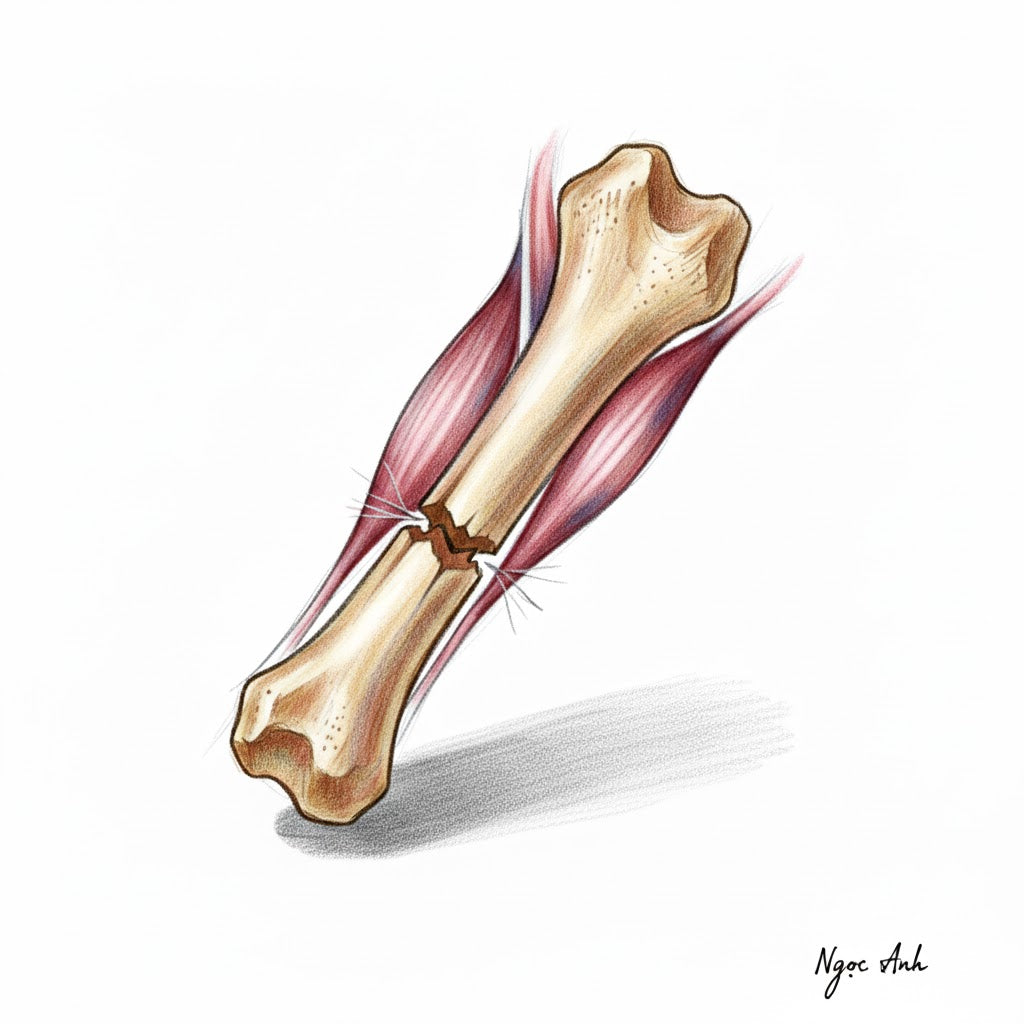Gastric and duodenal ulcers

What are the symptoms of peptic ulcers?
In the early stages of peptic ulcers, when the ulcers are small, you may not notice any symptoms. As the ulcers get larger, the disease can cause the following symptoms:
- Pain in the epigastric region (above the navel), either dull or cramping. The pain may occur when hungry, or about three hours after eating.
- Bloating and flatulence due to slowed digestion of food.
- Black stools are a sign of bleeding.
- Heartburn, a burning sensation in the upper abdomen between meals caused by stomach acid backing up into the esophagus.
- Change in appetite.
- Nausea and vomiting due to food and digestive juices refluxing into the esophagus.
- Unexplained weight loss.
- Vomiting blood when the disease progresses.
What causes gastric and duodenal ulcers?
Causes The main causes of gastric and duodenal ulcers include:
- Helicobacter Pylori (H. Pylori) infection, a type of bacteria found in the stomach lining, has the ability to weaken the protective mucus layer, allowing digestive juices to come into direct contact with the stomach and duodenal mucosa, causing damage.
- Long-term use of non-steroidal anti-inflammatory drugs (NSAIDs) such as aspirin and ibuprofen, especially at high doses. Because the mechanism of action of NSAIDs slows down the production of the mucous layer that protects the lining of the stomach and duodenum, they are attacked by digestive juices, also known as stomach acid.
Other risk factors
Other risk factors for peptic ulcers include:
- Drinking too much alcohol: Drinking too much alcohol irritates the lining of the stomach, causing it to become swollen and red. This condition is called gastritis, which increases the risk of ulcers forming.
- Smoking: Studies have shown that: (1) smoking can increase the risk of H. Pylori infection, (2) smoking inhibits the pancreas's ability to produce bicarbonate, affecting the neutralization of stomach acid, and (3) long-term smoking can stimulate the stomach to secrete more digestive juices, leading to ulcers.
- Unscientific lifestyle and diet: regularly eating at irregular times, skipping meals, eating too much, little exercise, or too much stress in life also increases the risk of peptic ulcers.
Measures to prevent gastric and duodenal ulcers
With the above causes and risk factors, gastric and duodenal ulcers can be prevented by the following measures:
- Limit alcohol as much as possible
- No smoking
- Use nonsteroidal anti-inflammatory drugs (NSAIDs) cautiously and avoid prolonged use if possible.
- Do not ignore the symptoms of the disease (see below)
- Prevent H. Pylori bacteria by washing hands regularly and eating well-cooked food and drinking boiled water.
- Maintain healthy living and eating habits, avoid anxiety and prolonged stress
How is gastric ulcer diagnosed?
To diagnose peptic ulcers, in addition to taking a medical history and physical examination, the doctor may order tests including: H. Pylori bacteria test, gastroduodenal endoscopy and gastroduodenal X-ray.
H. Pylori bacteria test
Tests to determine if a person has an H. Pylori infection include blood tests, stool tests, and H. Pylori breath tests.
With a stool or blood test, a blood sample is drawn and a stool sample is given for analysis in a laboratory to determine the presence of H. Pylori bacteria.
To perform the H. Pylori breath test, the patient will be given a drug containing a radioactive isotope to drink. After about 15 minutes, the patient will blow into a bag. If there is H. Pylori in the stomach, the pill will be broken down by the H. Pylori bacteria and produce CO2 gas. The measurement and analysis results will usually be available within 5 minutes with an accuracy of up to 88%, and a sensitivity of up to 95%. This method is considered the most accurate H. Pylori test.
Gastroduodenoscopy
A gastroduodenoscopy is a procedure that uses an endoscope to examine the upper digestive tract. During an endoscopy, the doctor inserts a hollow tube equipped with a lens (endoscope) down the patient's throat, esophagus, stomach, and small intestine to look for ulcers.
If an ulcer is found, your doctor may take a small tissue sample (biopsy) for testing.
This procedure is usually recommended for older patients, those with signs of bleeding, recent weight loss, or difficulty eating and swallowing.
X-ray of the stomach and duodenum
A barium swallow, also known as a gastroduodenal X-ray, is a procedure that produces images of the esophagus, stomach, and small intestine. To perform this procedure, the patient swallows a contrast medium containing barium. This helps the structures being examined appear clearly on the X-ray film.
How to treat gastric and duodenal ulcers?
Treatment for peptic ulcers depends on the severity and cause of the patient's condition, and often includes:
Use of medication
If a patient is infected with H. Pylori, treatment usually involves prescription antibiotics to kill the bacteria combined with medications to reduce stomach acid secretion, medications to neutralize stomach acid, and medications to protect the lining of the stomach and duodenum.
Surgery
Severe peptic ulcers may require surgical treatment to repair the stomach wall and control bleeding. Surgical procedures may include removing the ulcerated portion of the stomach or suturing the perforated area (in the case of a perforated ulcer).
In addition, patients also need to combine with a scientific, healthy diet and lifestyle. For example:
- Increase foods that protect the stomach lining, help heal ulcers, or reduce acid secretion, as well as foods rich in vitamins and minerals such as bread, rice, soup, bananas, okra, and red and dark green vegetables.
- Increase beverages such as coconut water, herbal tea, ginger water, turmeric powder and honey.
- Avoid foods that damage the stomach lining and increase stomach acid such as pickled vegetables, sour fruits, and alcoholic beverages such as beer and wine.
- Regular light exercise, avoid stress and prolonged fatigue, balance work and rest time, eat and sleep on time, etc.
-------------------------------------------------------------------------------------------
👉 Contact SunCare for medical support and advice as well as professional private jet transportation services 🇸🇬 SUNCARE PTE. LTD SINGAPORE
🏠 Add: 10 Anson Road, #10-11 International Plaza, Singapore 079903
☎️ Hotline: +65 96727717 (Dr. Lien Minh - Director) Zalo, Viber
📨 Email: suncarehealth@gmail.com





